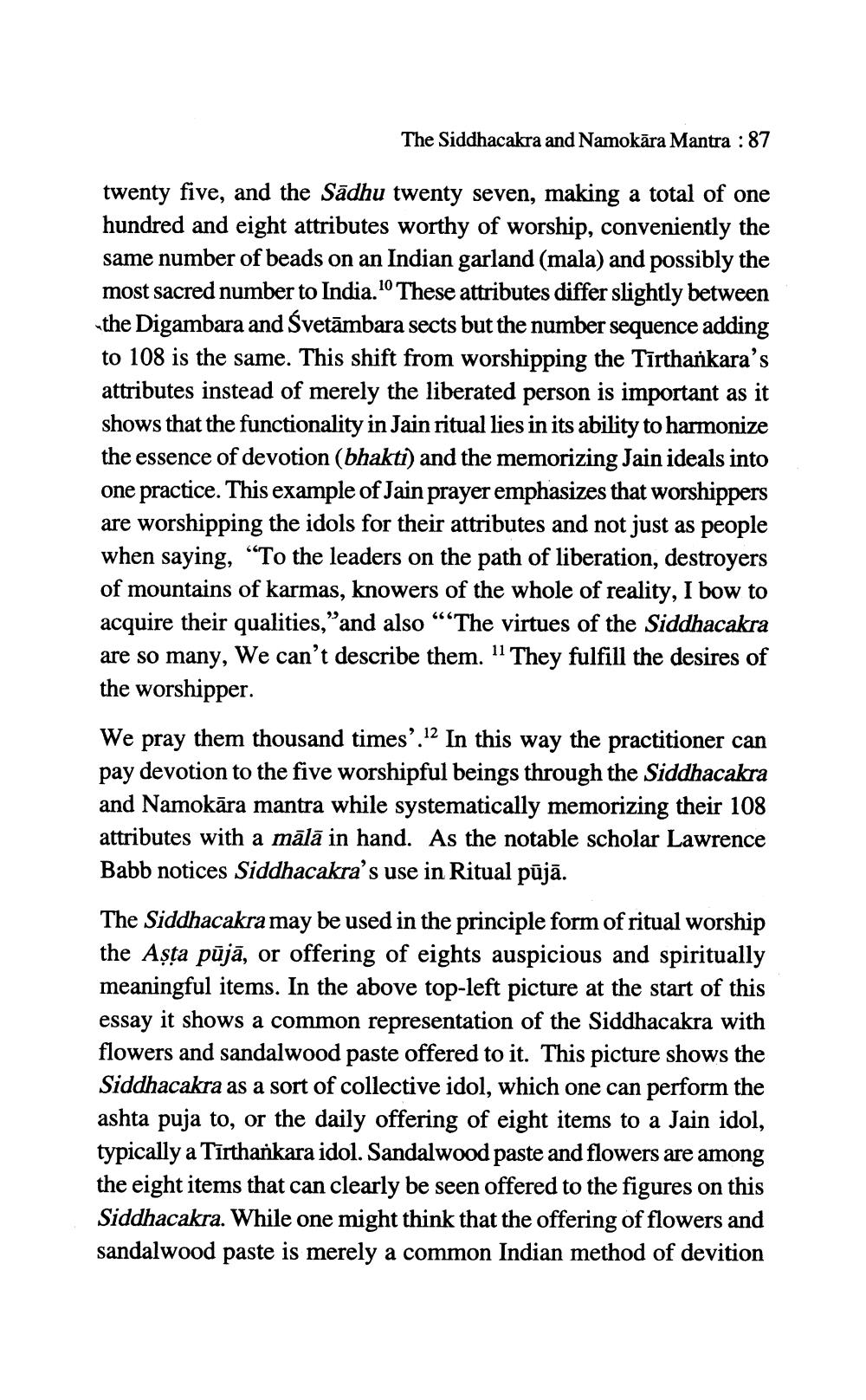________________
The Siddhacakra and Namokāra Mantra : 87
twenty five, and the Sādhu twenty seven, making a total of one hundred and eight attributes worthy of worship, conveniently the same number of beads on an Indian garland (mala) and possibly the most sacred number to India. These attributes differ slightly between „the Digambara and Svetāmbara sects but the number sequence adding to 108 is the same. This shift from worshipping the Tīrthankara's attributes instead of merely the liberated person is important as it shows that the functionality in Jain ritual lies in its ability to harmonize the essence of devotion (bhakti) and the memorizing Jain ideals into one practice. This example of Jain prayer emphasizes that worshippers are worshipping the idols for their attributes and not just as people when saying, “To the leaders on the path of liberation, destroyers of mountains of karmas, knowers of the whole of reality, I bow to acquire their qualities," and also “The virtues of the Siddhacakra are so many, We can't describe them. "1 They fulfill the desires of the worshipper. We pray them thousand times'.12 In this way the practitioner can pay devotion to the five worshipful beings through the Siddhacakra and Namokāra mantra while systematically memorizing their 108 attributes with a mālā in hand. As the notable scholar Lawrence Babb notices Siddhacakra's use in Ritual pūjā. The Siddhacakra may be used in the principle form of ritual worship the Așța pājā, or offering of eights auspicious and spiritually meaningful items. In the above top-left picture at the start of this essay it shows a common representation of the Siddhacakra with flowers and sandalwood paste offered to it. This picture shows the Siddhacakra as a sort of collective idol, which one can perform the ashta puja to, or the daily offering of eight items to a Jain idol, typically a Tīrthankara idol. Sandalwood paste and flowers are among the eight items that can clearly be seen offered to the figures on this Siddhacakra. While one might think that the offering of flowers and sandalwood paste is merely a common Indian method of devition




